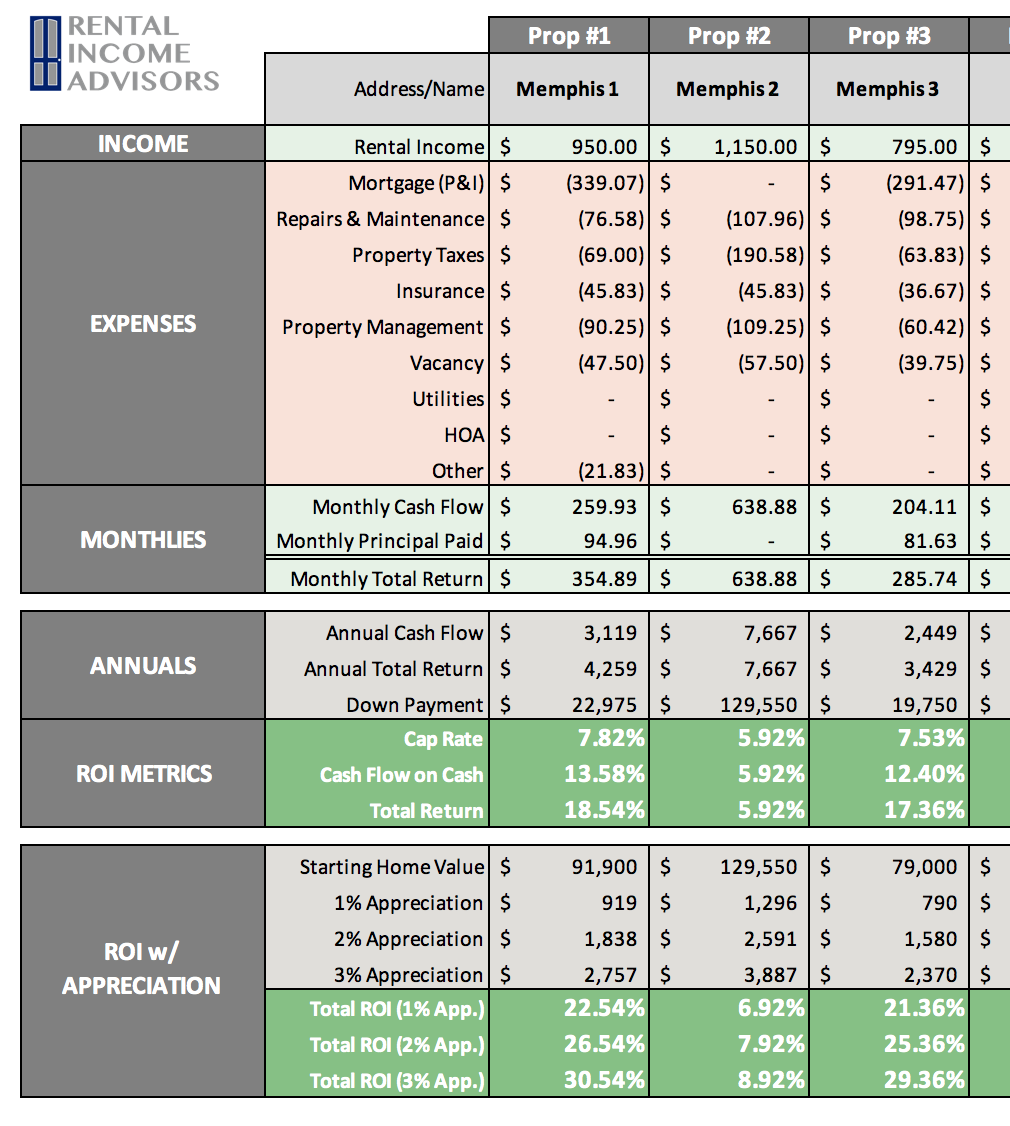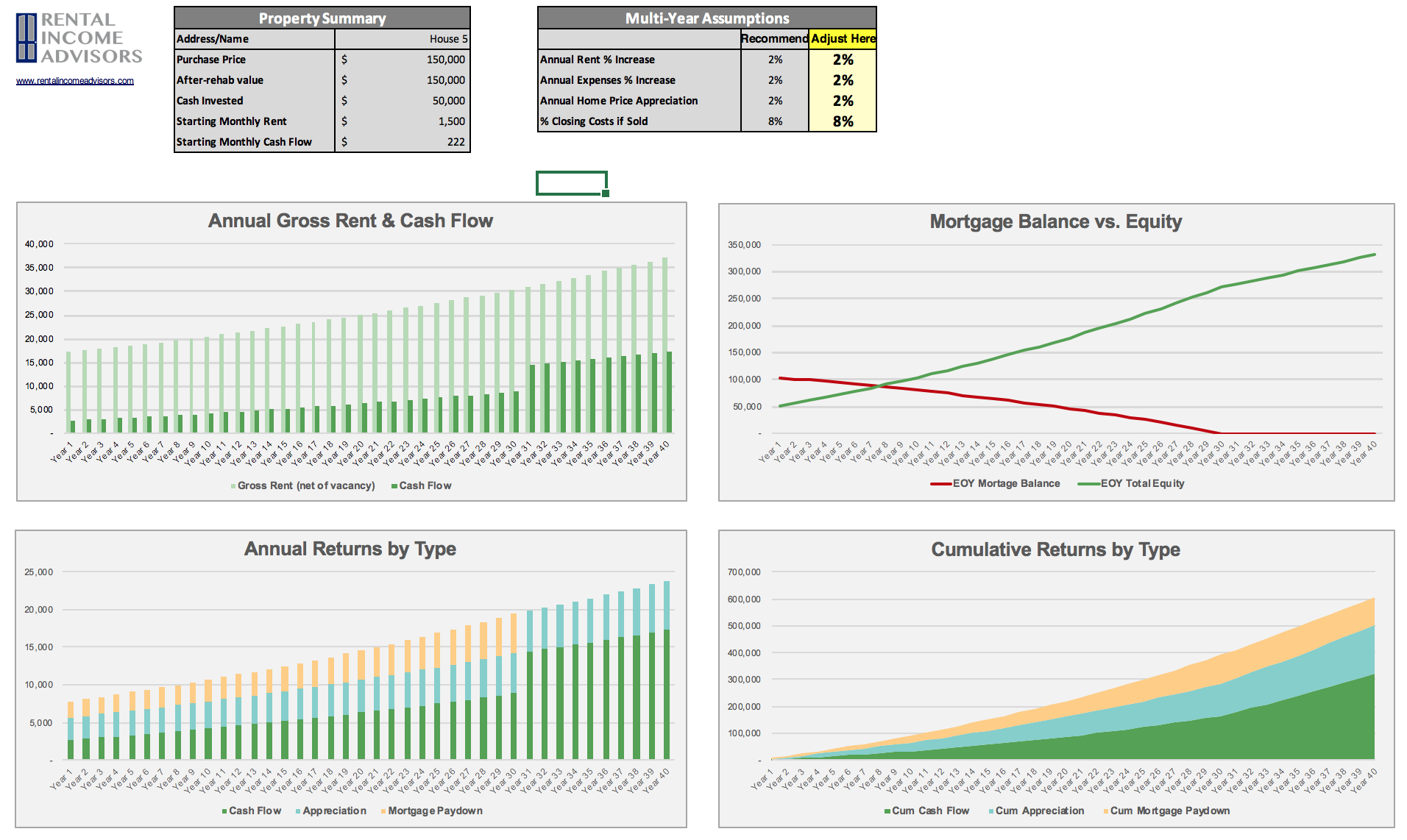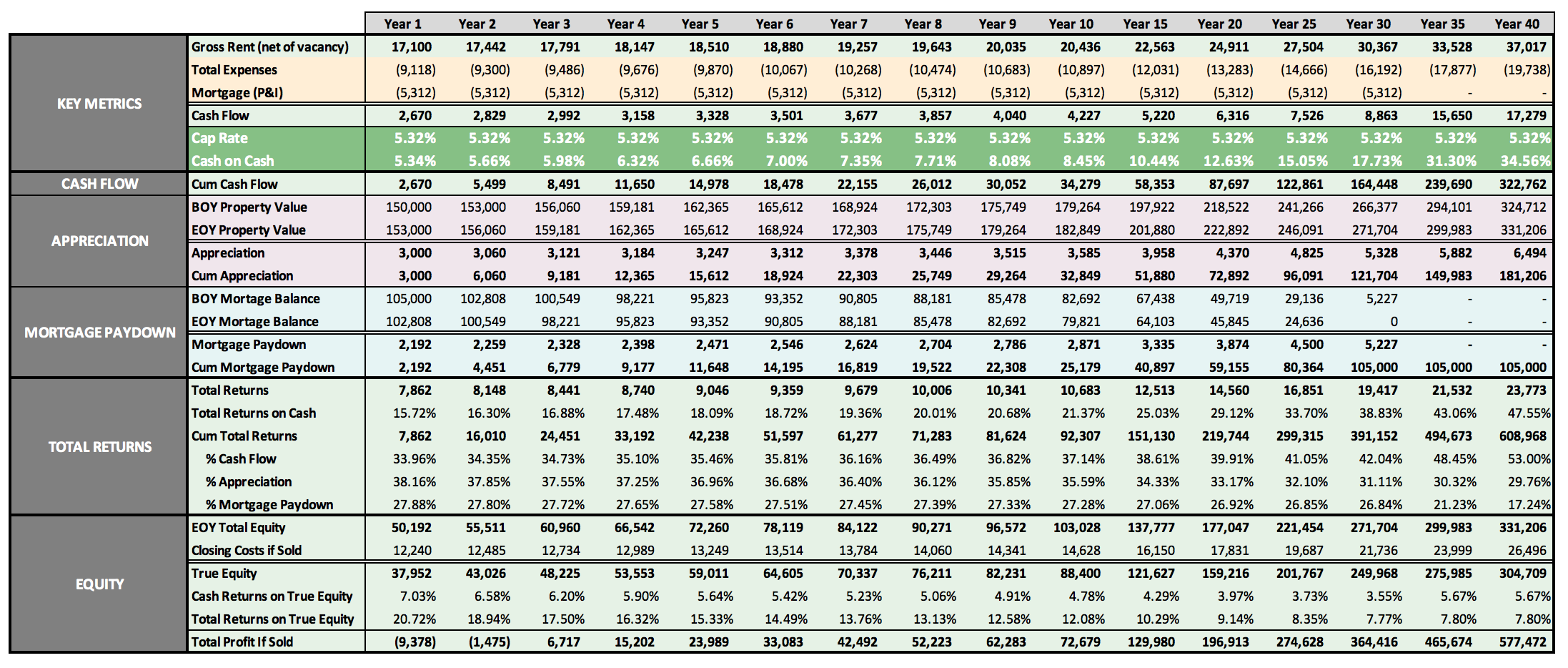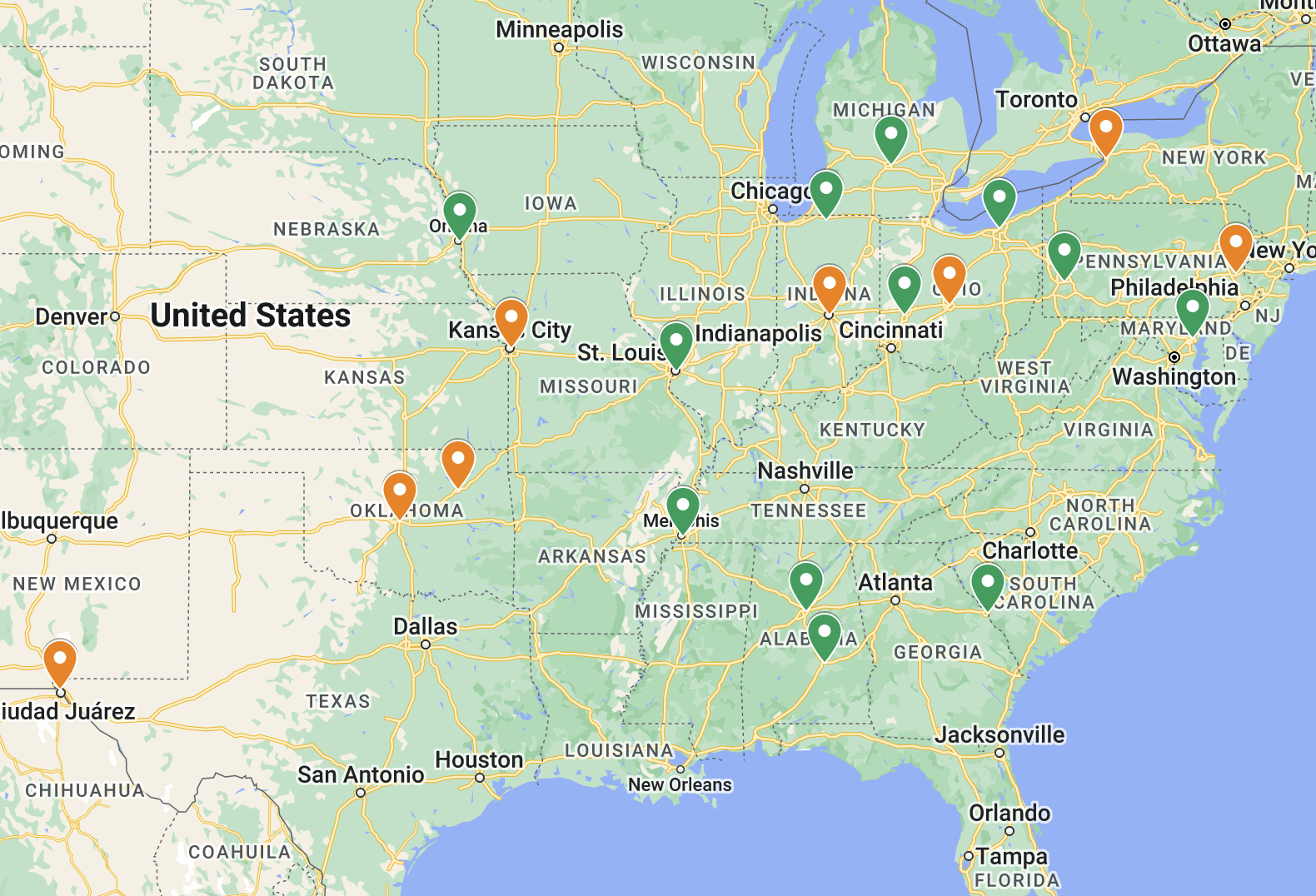Monthly Portfolio Report: March 2021
One of my goals with Rental Income Advisors is to be as transparent and data-driven as possible with my readers and my coaching clients. I think the best way to build confidence in a new investor is to actually show the numbers, to prove that rental property investing really does work as advertised.
For those reasons, I publish a monthly report on my portfolio’s performance. I hope that this chronological history paints a clear picture of what it’s like to be a remote landlord. It’s also a great exercise for me to be sure I’m staying plugged in to all my numbers.
Here is the update for March 2021.
Property Overview
I’m officially up to 20 doors with the addition of Property #19’s financials to my numbers this month!
The Turn at Property #7
Last month, I alluded to an early lease break at Property #7. Though there was no tenant in March, the property was “financially occupied” because I was able to retain the security deposit. (It will, however, be vacant in April.)
But the bigger news is the extent of the rehab that was required to get the house ready for the next tenant: there was extensive water damage from several roof leaks that the tenant failed to report, so more than half the interior walls, ceilings, and insulation had to be torn out and replaced, along with plenty of other small repairs, clean-up, yard work, and the like. I also took the opportunity to replace the existing carpeting with LVP, something I had always planned to do on the first turn anyway.
Here are the final costs for this turn:
Roof repair, yard work, paint, various maintenance items, & cleaning: $5,862
Capital expenditures (extensive sheetrock & insulation replacement, new flooring): $8,588
(As you might recall, I account for CapEx differently — so does the IRS! — and those costs are not figured in my monthly reports. Rather, they are part of my annual review of my portfolio when I look at how my equity in my properties has increased or decreased. Here is my 2020 Annual Report, in case you missed it, which shows all my numbers for last year, including CapEx.)
Altogether, it was quite a costly turn. And then, when the rehab was nearly complete, an established colony of honeybees was discovered in one of the walls that wasn’t torn out. My property manager is now working with a beekeeper to move the honeybees into wooden hives, and then I’ll have to build back the areas damaged by the extraction process. (It sounds bad, but it shouldn’t be too expensive.) The bee guy expects there are between 30,000 and 50,000 bees in this colony!
Despite all this, there are some silver linings (always good to focus on those when you can):
I was able to get this older home into tip-top shape, including replacing carpet with LVP. This house now meets the standard of most of the rest of my portfolio.
I only paid $45,000 for this house in 2019, knowing that there would be work to do at the first turn. So (some of) this was built in, and I still have plenty of positive equity in the home even after $8K+ in capital expenditures.
There is a chance my insurance company will reimburse some of these costs. They initially denied my claim, based on the idea that the water didn’t actually come from the roof leaks. I’ve set them straight on the facts, and they are currently reconsidering, so we’ll see what happens.
I was able to re-rent the house for $125/month more than the previous tenant was paying. The tenant will move in as soon as the bees are moved to a new home.
Also, I’m doing my part to prevent the collapse of the honeybee population! (Seriously, though…it’s a big problem.)
Other than this very eventful turn, the only other situation worth mentioning in my portfolio was a late-paying tenant at Property #2 — more on that below.
Rents
Collections exceed my charged rent because of the retained security deposit at Property #7, which I mentioned above.
Eviction Filing at Property #2
This overage was somewhat offset by one tenant who failed to pay their March rent at all. After hearing nothing from the tenant for a few weeks, my property manager filed for eviction on March 23rd. This cost me $350 in legal fees, but it’s a standard best practice when a tenant hasn’t paid by that late in the month, especially if the tenant is not communicating. In the best-case scenario, the eviction filing gets the tenant’s attention, and they bring their account current — this is why far less than half of eviction filings actual result in an eviction.
In this case, the tenant did not pay, and by mid-April, had not paid April either. We were awaiting a court date, which we expected in late May or early June. (As you can see, evictions are costly and time-consuming affairs!) However, I’ve just learned that the tenant took the initiative to apply for a grant program administered by the city of Memphis, and funded with federal dollars intended to help struggling tenants stay in their homes during the pandemic. Under this program, I was offered 80% of the rent due (for March and April) in exchange for forgiveness of the balance and a “clean slate” for the tenant. I happily agreed.
Therefore, for March and April, I’m only able to book 80% of the rent on this property. But that’s a great deal for me — not only does it put back-rent directly in my pocket and save me the costs and time of pursuing the eviction, it’s also the right thing to do for the tenant, for whom an eviction on their record could make it hard to rent in the future. I’m glad to see these government programs actually working to provide help to people when they need it, and I hope the tenant’s situation has improved such that they can stay current on their rent going forward.
Expenses
A few explanations of this month’s expenses:
Maintenance & Repairs: In addition to the nearly $6K on the rent-ready repairs described above, there were several other typical expenses elsewhere: an HVAC repair; downed branches; two plumbing issues; and several inspections, which is an annual process my PM performs on all occupied properties. (Those regular inspections are one of the key benefits of having a professional property manager — read more about what property managers do in this article.)
Legal Fees: This is the fee I paid for the eviction filing discussed above.
Utilities: During the rehab at Property #7 — anytime there is no tenant, in fact — I’m responsible for the utilities, which my PM pays to the local utility company on my behalf, and bills back to me.
Property Taxes: Somehow, there was $9.88 of unpaid property taxes on Property #19, which I closed on a few months ago. This should have been paid by the previous owner, but it was was too little money to spend any time on, so I just went head and paid it.
The Bottom Line
My financial model currently projects my Memphis portfolio to generate $5,930 of positive cash flow in an average month. In March, the positive cash flow was just $1,556, more than $4K below that projected average. The expensive turn at Property #7 really did me in this month. Some reimbursement from my insurance company would do a lot to soften the blow, so I’m keeping my fingers crossed for that.
Obviously, it wasn’t a stellar month. But as I’ve reminded a few of my coaching clients recently, you have to be prepared to take the good with the bad in this business, and stay focused on the long-term value of rental property investing.
(Interested in coaching? Schedule a free initial consultation and we’ll chat!)
Finally, here’s the running tally and graph I update each month. The dotted blue line indicates my projected average monthly cash flow for my portfolio in each given month. Hopefully I can make up some of this month’s lost ground later in the year.
Free RIA Property Analyzer
Need help running the numbers on rental properties? Want to be more confident in your financial projections?
Check out the FREE RIA Property Analyzer. I guarantee this is the most intuitive, elegant, and powerful free tool you’ll find to run the financials on rental properties. I still use it every day, and so do all my coaching clients.
Here’s what the Property Analyzer looks like:
About the Author
Hi, I’m Eric! I used cash-flowing rental properties to leave my corporate career at age 39. I started Rental Income Advisors in 2020 to help other people achieve their own goals through real estate investing.
My blog focuses on learning & education for new investors, and I make numerous tools & resources available for free, including my industry-leading Rental Property Analyzer.
I also now serve as a coach to dozens of private clients starting their own journeys investing in rental properties, and have helped my clients buy millions of dollars (and counting) in real estate. To chat with me about coaching, schedule a free initial consultation.





















